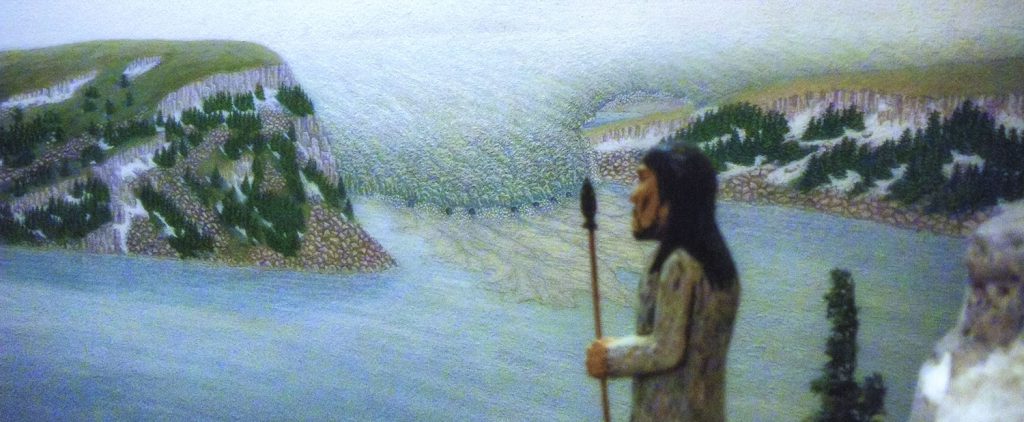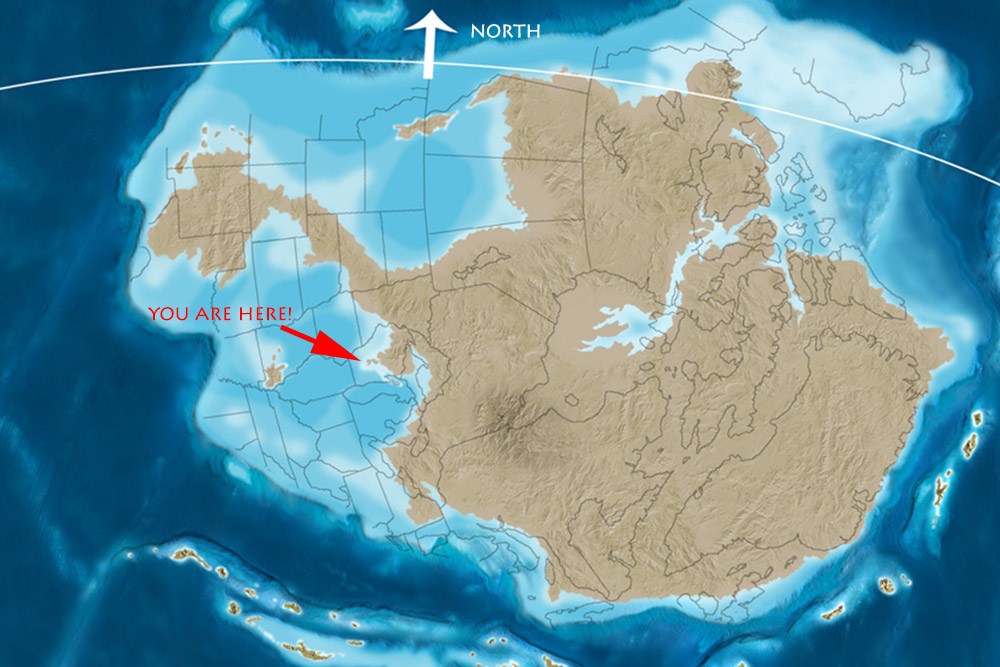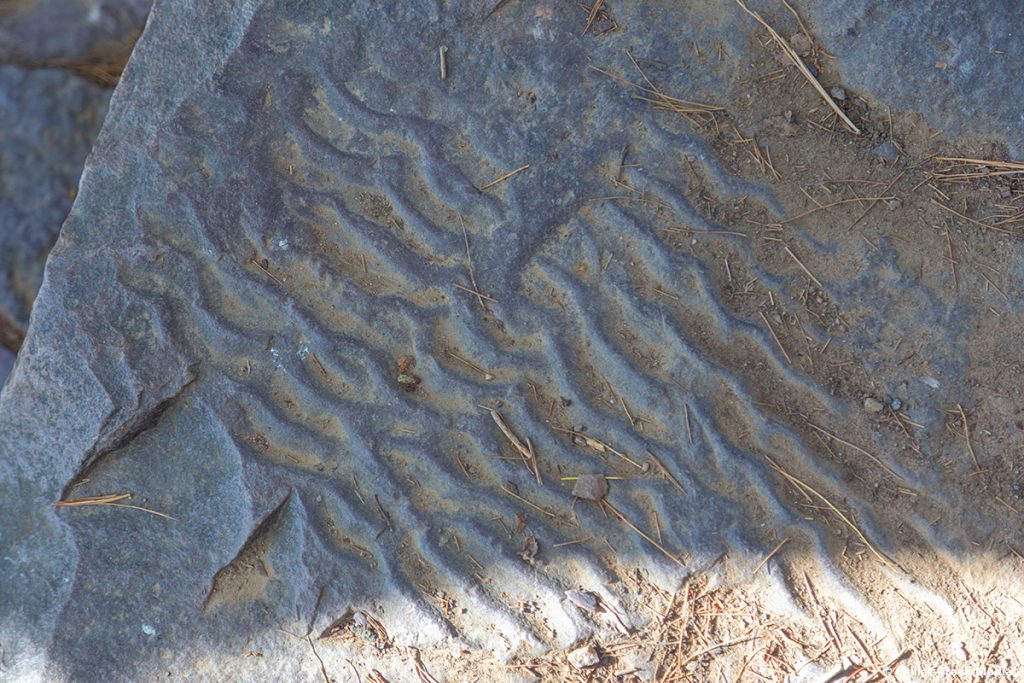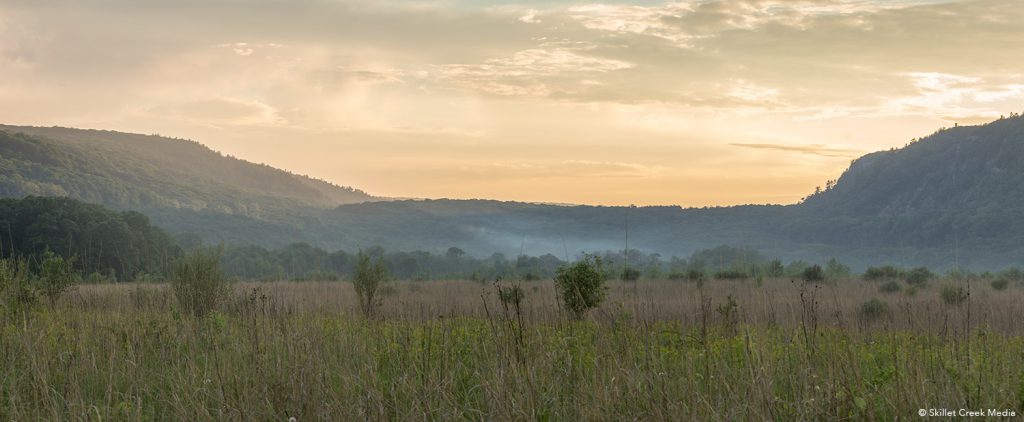
One of the most common questions asked about Devil’s Lake is, “Did the glaciers make the lake?” It’s a great question! We all learned about glaciers in school, and we know they covered parts of Wisconsin. You might see signposts with mammoths all over the place, so it’s not surprising to think that the glaciers made the lake. But the story is just a bit more complicated than that.
Let’s start with the bluffs surrounding the lake, which are part of the Baraboo range or the “Baraboo hills.” They are incredibly ancient and about 1.6 BILLION YEARS OLD! In fact, they are older than the Rocky Mountains and the Himalayas! They are so old that you won’t even find fossils of dinosaurs in the rocks. The Baraboo hills are what’s left of eroded mountains over eons of erosion.

Our bluffs were once covered by a shallow sea that receded over time, leaving ripple marks in the stone. You can see modern ripple marks being created right now on the beaches of Devil’s Lake. It’s even thought that in another slice of time, much of central Wisconsin was a desert scoured by high winds and sand! Over billions of years, so many stories have shaped the Baraboo hills and Devil’s Lake.

About 500 million years ago, during another era, the Baraboo hills were islands in an archipelago jutting out into a tropical sea. At that time, the gorge where Devil’s Lake now sits was actually a thin channel between two islands created in part by the east and west bluffs. Back then, powerful tropical storms and massive waves tossed onto the shore, and we can still see those rocks in various places along the east bluff trail.
Fast forward to the last ice age, about 10,000 years ago. At that time, a river flowed through the gorge we call Devil’s Lake. When the glacier arrived, it was on its last legs, and the Baraboo hills got in the way. The glacier wrapped around the bluffs and dammed up the river on both the north and south ends, creating “terminal moraines” that you can still see today.

The melt water from those old glaciers is long gone, evaporated, and recycled all over the earth. The water in the lake today comes from modern sources like rain, springs, and a small stream on the southwest end of the lake. Despite the absence of glacial water, the lake still feels “glacial” on some days.
The place we call “Devil’s Lake” has been around in one form or another for billions of years. It has traveled the world on moving tectonic plates, sat at the bottom of warm, tropical seas, and survived many glacial periods. The Baraboo hills and Devil’s Lake have been created and molded over time through many upheavals. We hope you find this brief overview of the geology of Devil’s Lake as fascinating as we do.
** Credit goes to Charles R. Van Hise, Paul Herr, Ken Lange, Sue Johansen, Keith Montgomery, Alton Dooley and a host of other researchers, writers, bloggers, naturalists and geologists whose concepts I’ve generalized and mangled to create this very short overview of Devil’s Lake State Park geology…
Read On!
- Wisconsin Glaciation – Wikipedia
- The Baraboo Ranges & Devil’s Lake Gorge
- Roadside Geology of Wisconsin – Robert H. Dott, Jr. and John W. Attig
- The Changing Earth – James Monroe, Reed Wicander
